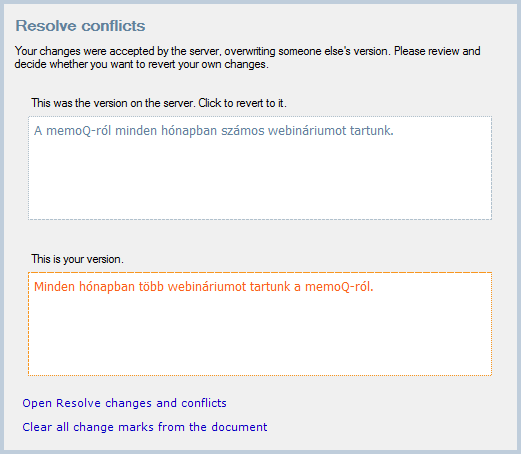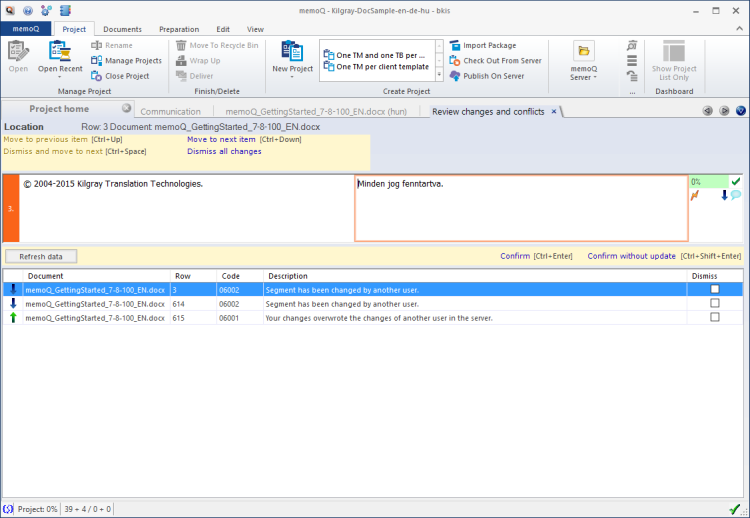To report site rules violations or get help, contact a site moderator:
You can also contact site staff by submitting a support request » memoQ Server. Resolving conflicts when several people work on the same project (memoQ 9.5)
| ||||||||||||||||||||||||||||||||||
Your current localization setting
English
Select a language
Close search




 )? Do I just ignore them? Or do I need to Dismiss them? (and again, wouldn’t that mean that I reject them?) Do I, perhaps, need to Clear all change marks from the document? And, anyway, what does this mean exactly? Simply clearing the marks or the changes as well? Why would I need to do it?
)? Do I just ignore them? Or do I need to Dismiss them? (and again, wouldn’t that mean that I reject them?) Do I, perhaps, need to Clear all change marks from the document? And, anyway, what does this mean exactly? Simply clearing the marks or the changes as well? Why would I need to do it?

